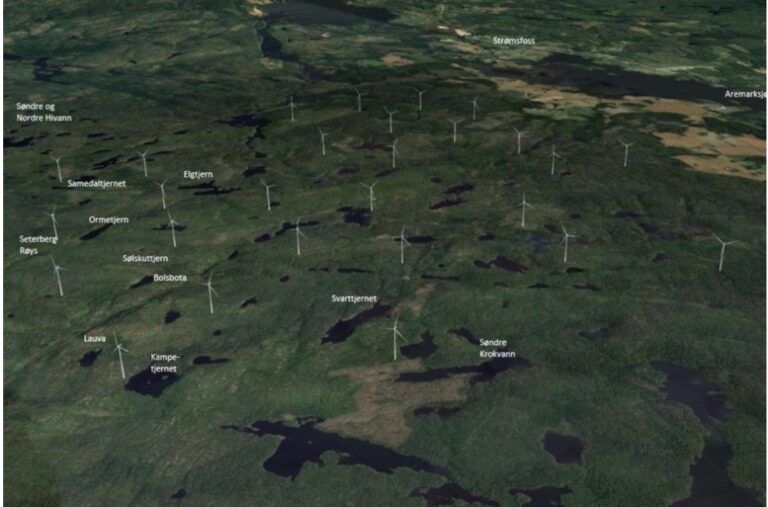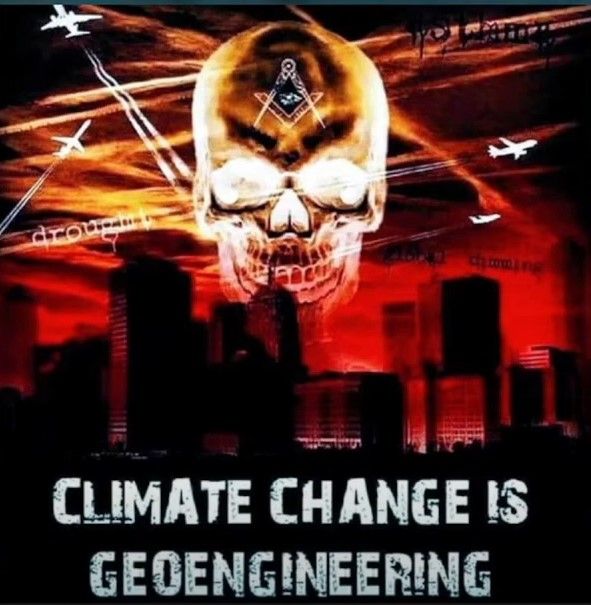!The White House is coordinating a 2ve-year research plan to study ways of modifying the amount of sunlight that reaches the earth to temper the e;ects of global warming, a process sometimes called solar geoengineering or sunlight re>ection. The research plan will assess climate interventions, including spraying aerosols into the stratosphere to re>ect sunlight back into space, and should include goals for research, what’s necessary to analyze the atmosphere, and what impact these kinds of climate interventions may have on Earth, according to the White House’s OEce of Science and Technology Policy. Congress directed the research plan be produced in its spending plan for 2022, which President Joe Biden signed in March. Some of the techniques, such as spraying sulfur dioxide into the atmosphere, are known to have harmful e;ects on the environment and human health. But scientists and climate leaders who are concerned that humanity will overshoot its emissions targets say research is important to 2gure out how best to balance these risks against a possibly catastrophic rise in the Earth’s temperature. Getting ready to research a topic is a very preliminary step, but it’s notable the White House is formally engaging with what has largely been seen as the stu; of dystopian fantasy. In Kim Stanley Robinson’s science 2ction novel, “The Ministry for the Future,” a heat wave in India kills 20 million people and out of desperation, India decides to implement its own strategy of limiting the sunlight that gets to Earth. Chris Sacca, the founder of climate tech investment fund Lowercarbon Capital, said it’s prudent for the White House to be spearheading the research e;ort. “Sunlight re>ection has the potential to safeguard the livelihoods of billions of people, and it’s a sign of the White House’s leadership that they’re advancing the research so that any future decisions can be rooted in science not geopolitical brinkmanship,” Sacca told CNBC. (Sacca has donated money to support research in the area, but said he has “zero 2nancial interests beyond philanthropy” in the idea and does not think there should be private business models in the space, he told CNBC.) Harvard professor David Keith, who 2rst worked on the topic in 1989, said it’s being taken much more seriously now. He points to formal statements of support for researching sunlight re>ection from the Environmental Defense Fund, the Union of Concerned Scientists, and the Natural Resources Defense Council, and the creation of a new group he advises called the Climate Overshoot Commission, an international group of scientists and lawmakers that’s evaluating climate interventions in preparation for a world that warms beyond what the Paris Climate Accord recommended. To be clear, nobody is saying sunlight-re>ection modi2cation is the solution to climate change. Reducing emissions remains the priority. “You cannot judge what the country does on solar-radiation modi2cation without looking at what it is doing in emission reductions, because the priority is emission reductions,” said Janos Pasztor, executive director of the Carnegie Climate Governance Initiative. “Solar-radiation modi2cation will never be a solution to the climate crisis.” The idea of sunlight re>ection 2rst appeared prominently in a 1965 report to President Lyndon B. Johnson, entitled “Restoring the Quality of Our Environment,” Keith told CNBC. The report >oated the idea of spreading particles over the ocean at a cost of $100 per square mile. A one percent change in the re>ectivity of the Earth would cost $500 million per year, which does “not seem excessive,” the report said, “considering the extraordinary economic and human importance of climate.” The estimated price tag has gone up since then. The current estimate is that it would cost $10 billion per year to run a program that cools the Earth by 1 degree Celsius, said Edward A. Parson, a professor of environmental law at UCLA’s law school. But that 2gure is seen to be remarkably cheap compared to other climate change mitigation initiatives. A landmark report released in March 2021 from the National Academies of Sciences, Engineering, and Medicine addressed three kinds of solar geoengineering: stratospheric aerosol injection, marine cloud brightening, and cirrus cloud thinning. Stratospheric aerosol injection would involve >ying aircraft into the stratosphere, or between 10 miles and 30 miles skyward, and spraying a 2ne mist that would hang in the air, re>ecting some of the sun’s radiation back into space. “The stratosphere is calm, and things stay up there for a long time,” Parson told CNBC. “The atmospheric life of stu; that’s injected in the stratosphere is between six months and two years.” Stratospheric aerosol injection “would immediately take the high end o; hot extremes,” Parson said. And also it would “pretty much immediately” slow extreme precipitation events, he said. “The top-line slogan about stratospheric aerosol injection, which I wrote in a paper more than 10 years ago — but it’s still apt — is fast, cheap and imperfect. Fast is crucial. Nothing else that we do for climate change is fast. Cheap, it’s so cheap,” Parson told CNBC. “And it’s not imperfect because we haven’t got it right yet. It’s imperfect because the imperfection is embedded in the way it works. The same reason it’s fast is the reason that it’s imperfect, and there’s no way to get around that.” One option for an aerosol is sulfur dioxide, the cooling e;ects of which are well known from volcanic eruptions. The 1991 eruption of Mount Pinatubo, for instance, spewed thousands of tons of sulfur dioxide into the stratosphere, causing global temperatures to drop temporarily by about 1 degree Fahrenheit, according to the U.S. Geological Survey. There’s also a precedent in factories that burn fossil fuels, especially coal. Coal has some sulfur that oxidizes when burned, creating sulfur dioxide. That sulfur dioxide goes through other chemical reactions and eventually falls to the earth as sulfuric acid in rain. But during the time that the sulfur pollution sits in the air, it does serve as a kind of insulation from the heat of the sun. Ironically, as the world reduces coal burning to curb the carbon dioxide emissions that cause global warming, we’ll also be eliminating the sulfur dioxide emissions that mask some of that warming. “Sulfur pollution that’s coming out of smokestacks right now is masking between a third and a half of the heating signal from the greenhouse gases humans have already emitted into the atmosphere,” Parson said. In other words, we’ve been doing one form of sunlight re>ection for decades already, but in an uncontrolled fashion, explained Kelly Wanser, the executive director of SilverLining, an organization promoting research and governance of climate interventions. “This isn’t something totally new and Frankenstein — we’re already doing it; we’re doing it in the most dirty, unplanned way you could possibly do it, and we don’t understand what we’re doing,” Wanser told CNBC. Spraying sulfur in the stratosphere is not the only way of manipulating the amount of sunlight that gets to the Earth, and some say it’s not the best option. “Sulfur dioxide is likely not the best aerosol and is by no means the only technique for this. Cloud brightening is a very promising technique as well, for example,” Sacca told CNBC. Marine cloud brightening involves increasing the re>ectivity of clouds that are relatively close to the surface of the ocean with techniques like spraying sea salt crystals into the air. Marine cloud brightening generally gets less attention than stratospheric aerosol injection because it a;ects a half dozen to a few dozen miles and would potentially only last hours to days, Parson told CNBC. Cirrus cloud thinning, the third category addressed in the 2021 report from the National Academies, involves thinning mid-level clouds, between 3.7 and 8.1 miles high, to allow heat to escape from the Earth’s surface. It is not technically part of the “solar geoengineering” umbrella category because it does not involve re>ecting sunlight, but instead involves increasing the release of thermal radiation. There are signi2cant and well-known risks to some of these techniques — sulfur dioxide aerosol injection, in particular. First, spraying sulfur into the atmosphere will “mess with the ozone chemistry in a way that might delay the recovery of the ozone layer,” Parson told CNBC. The Montreal Protocol adopted in 1987 regulates and phases out the use of ozone depleting substances, such as hydrochloro>uorocarbons (HCFCs) which were commonly used in refrigeration and air conditioners, but that healing process is still going on. Also, sulfates injected into the atmosphere eventually come down as acid rain, which a;ects soil, water reservoirs, and local ecosystems. Third, the sulfur in the atmosphere forms very 2ne particulates that can cause respiratory illness. The question, then, is whether these known e;ects are more or less harmful than the warming they would o;set. “Yes, damaging the ozone is bad, acid deposition is bad, respiratory illness is bad, absolutely. And spraying sulfur in the stratosphere would contribute in the bad direction to all of those e;ects,” Parson told CNBC. “But you also have to ask, how much and relative to what?” The sulfur already being emitted from the burning of fossil fuels is causing environmental damage and is already killing between 10 million to 20 million people a year due to respiratory illness, said Parson. “So that’s the way we live already,” he said. Meanwhile, “the world is getting hotter, and there will be catastrophic impacts for many people in the world,” said Pasztor. “There’s already too much carbon out there. And even if you stop all emissions today, the global temperature will still be high and will remain high for hundreds of years. So, that’s why scientists are saying maybe we need something else, in addition — not instead of — but maybe in addition to everything else that is being done,” he said. “The current action/nonaction of countries collectively — we are committing millions of people to death. That’s what we’re doing.” For sunlight-re>ection technology to become a tool in the climate change mitigation toolbox, awareness among the public and lawmakers has to grow slowly and steadily, according to Tyler Felgenhauer, a researcher at Duke University who studies public policy and risk. “If it is to rise on to the agenda, it’ll be kind of an evolutionary development where more and more environmental groups are willing to state publicly that they’re for research,” Felgenhauer told CNBC. “We’re arguing it’s not going to be some sort of one big, bad climate event that makes us all suddenly adopt or be open to solar geoengineering — there will be more of a gradual process.” Some environmentalists consider sunlight relfection a “moral hazard,” because it o;ers a relatively easy and inexpensive alternative to doing the work of reducing emissions. One experiment to study stratospheric aerosols by the Keutsch Group at Harvard was called o; in 2021 due to opposition. The experiment would “threaten the reputation and credibility of the climate leadership Sweden wants and must pursue as the only way to deal e;ectively with the climate crisis: powerful measures for a rapid and just transition to zero emission societies, 100% renewable energy and shutdown of the fossil fuel industry,” an open letter from opponents said. But proponents insist that researching sunlight-modi2cation technologies should not preclude emissions-reduction work. “Even the people like me who think it’s very important to do research on these things and to develop the capabilities all agree that the urgent top priority for managing climate change is cutting emissions,” Parson told CNBC. Keith of Harvard agreed, saying that “we learn more and develop better mechanism[s] for governance.” Doing research is also important because many onlookers expect that some country, facing an unprecedented climate disaster, will act unilaterally to will try some version of sunlight modi2cation anyway — even if it hasn’t been carefully studied. “In my opinion, it’s more than 90 percent likely that within the next 20 years, some major nation wants to do this,” Parson said. Sacca put the odds even higher. “The odds are 100 percent that some country pursues sunlight re>ection, particularly in the wake of seeing millions of their citizens die from extreme weather,” Sacca told CNBC. “The world will not stand idly by and leaders will feel compelled to take action. Our only hope is that by doing the research now, and in public, the world can collaboratively understand the upsides and best methods for any future project.” Correction: Correction: The Climate Overshoot Commission has not issued a formal statement of support for sunlight reCection. (* +,–./+0123/4,.5 !»#$%&(.&#%*&»,,
World Economic Forum Parrots SAI Geoengineering Strategies
31. januar 2023 | ZeroGeoengineering.com |
I oktober 2022 kunngjorde Det hvite hus planen sin om å gå videre med stratosfærisk aerosolinjeksjon (SAI) solenergi-geoteknikk, uavhengig av den moralske faren og kjente skader som kan påføres menneskers helse og miljøet, potensielt på global skala.
[På en MIT Geoengineering-debatt i 2013 innrømmet Harvard-professor David Keith at geoengineering er en moralsk fare som sannsynligvis vil drepe titusenvis av mennesker. LINK]
Som mange forskere er godt klar over, pågår SAI- programmer og diskusjoner for solenergi , koordinert og finansiert av individuelle nasjoner, offentlige etater , privatpersoner , Verdensbanken , FNs verdensmeteorologiske organisasjon (WMO) og andre enheter.
World Economic Forum (WEF) er en innflytelsesrik , men ikke-valgt organisasjon som papegøyer SAIs solenergi-geoingeniørstrategier.
WEF- artikkelen nedenfor bruker samme språk og logikk om SAI solar geoengineering som Det hvite hus, og beskriver «sprøyting av stoffer» som danner aerosoler i atmosfæren, basert på klimateorien om at jordens skiftende temperatur er et problem.
I slekt:
Hva er opphavet til CO2-teorien?
CO2-teori som begrunnelse for klimamanipulasjon og værmodifikasjonsstrategi_DARPA 1975
Stratosfærisk aerosolmodifisering av supersoniske transportoperasjoner med klimaimplikasjoner 1980
Grunnårsaken til jordens nåværende værubalanse er forurensning og flere tiår med klimamanipulasjon som er ute av kontroll.
Tilskuddsavhengige akademikere mottar ubegrenset finansiering for å engasjere seg i atmosfærisk (og annen) «forskning» uten etiske, moralske eller miljømessige sikkerhetsrestriksjoner.
FN, en av talsmennene for værmodifikasjoner, samarbeider med regjeringer via WMO , og har en langvarig interesse for eugenikk ( skaper forhold for nedgang i fruktbarheten ).
Lær mer: WMOs strategiske mål 2020–2023 • Zero Geoengineering

- «Solar geoengineering innebærer å sprøyte stoffer inn i atmosfæren som danner reflekterende aerosoler og spretter sollys tilbake til verdensrommet.
- Dette kan stoppe den globale temperaturen i å øke, men temperaturene lokalt eller regionalt kan fortsette å øke i løpet av de neste årene, viser ny forskning.
- De bredere konsekvensene av solar geoengineering er fortsatt dårlig forstått, noe som gjør det til en potensielt risikabel tilnærming til å takle global oppvarming.
- US National Academies of Sciences, Engineering and Medicine har anbefalt å finansiere ytterligere forskning om emnet.
Se for deg en fremtid der deler av verden har blitt uutholdelig varm, til tross for forsøk på å redusere utslippene av klimagasser raskt. Noen regjeringer kan bestemme seg for å «geoengineer» planeten ved å sprøyte stoffer inn i den øvre atmosfæren for å danne fine reflekterende aerosoler – en prosess kjent som stratosfærisk aerosolinjeksjon.
Link for å lese hele artikkelen på kilde HER
Link til WEF Aerospace HER

Link for å lese hele artikkelen her










+ There are no comments
Add yours